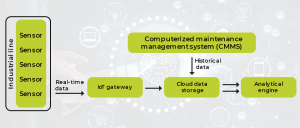Predictive Cloud Maintenance: Monitoring, Updates, and Analytics for Uptime

Companies around the globe rely on robust cloud infrastructure to operate efficiently, and to ensure this, the significance of uptime is undeniable. Downtime, in contrast, translates to lost revenue, frustrated customers, and a dented reputation. This is where predictive cloud maintenance comes in—a proactive approach to ensuring your cloud systems run smoothly and efficiently.
The Importance of Cloud Services and Their Uptime
Cloud services offer a slew of benefits: scalability, flexibility, cost-effectiveness, and access to pioneering technology. From storing sensitive data to running critical applications, companies are increasingly reliant on the cloud for core operations. Nevertheless, any disruption in cloud services can have a domino effect, impacting everything from employee efficiency to customer interactions.
Here’s why prioritizing cloud uptime is crucial:
- Financial Impact: Downtime translates to lost revenue. Every minute your cloud goes offline can result in significant financial losses.
- Customer Dissatisfaction: Customers expect seamless online experiences. Disruptions hinder access to services and erode trust.
- Productivity Decline: Downtime hinders employee productivity, leading to delays and missed deadlines.
- Reputational Damage: Frequent outages can damage your brand image and erode customer confidence.

Cloud-Managed Services and Their Role in Uptime
Cloud Managed Services (CMS) empower businesses to outsource the management of their cloud infrastructure. These services typically include:
- Monitoring: Proactive monitoring of cloud resources for performance and potential issues.
- Patch Management: Regular application and software updates to maintain security and functionality.
- Performance Optimization: Configuring and scaling cloud resources for optimal performance and cost efficiency.
- Incident Management: Addressing cloud emergencies and resolving issues swiftly to minimize downtime.
CMS providers leverage their expertise and specialized tools to ensure your cloud infrastructure runs smoothly, freeing your internal IT teams to focus on core business strategies. However, even CMS solutions may not be enough to predict and prevent every potential outage.

Introducing Cloud Security Managed Services for Proactive Defense
Cloud Security Managed Services (CSMS) take CMS a step further by offering advanced security measures. These services include:
- Threat Detection and Prevention: Continuous monitoring for security vulnerabilities and protection against cyberattacks.
- Compliance Management: Assisting with adherence to relevant data security regulations.
- Incident Response: Providing specialized personnel to handle security breaches efficiently.
By layering CSMS on top of CMS, businesses can achieve a robust defense system for their cloud infrastructure. However, for truly proactive maintenance, we need to delve into the realm of Artificial Intelligence (AI) and its application in predictive maintenance.
Using AIOps for Predictive Maintenance in the Cloud
AIOps (Artificial Intelligence for IT Operations) leverages AI and machine learning algorithms to analyze vast amounts of cloud data, including:
- Server performance metrics
- Resource utilization
- Application logs
- Network traffic patterns
By analyzing these data points, AIOps can learn normal operational patterns and identify anomalies that might signify potential disruptions. This allows for:
- Predictive Maintenance: Identifying potential issues before they escalate, enabling preventive actions like proactive maintenance or resource scaling.
- Automated Fix Recommendations: AIOps can suggest corrective actions based on historical data and industry best practices.
- Root Cause Analysis: AIOps can identify the underlying causes of past issues, helping to prevent similar occurrences in the future.
By employing AIOps for predictive cloud maintenance, businesses can move from reactive firefighting to a proactive approach that ensures optimal cloud performance and avoids costly downtime.

Benefits of Predictive Maintenance for Cloud Infrastructure
Implementing predictive cloud maintenance offers a wide range of benefits for businesses, including:
- Reduced Downtime: Minimize outages and maximize uptime for your critical business applications.
- Enhanced Performance: Proactive maintenance helps optimize cloud resources for peak performance.
- Improved Security: Early detection of potential security threats allows for timely intervention.
- Cost Savings: Reduce the financial impact of reactive maintenance and emergency repairs.
- Increased Efficiency: Free up IT resources to focus on innovative projects instead of troubleshooting.
- Improved Business Continuity: Ensure uninterrupted operations and maintain a competitive edge.
Conclusion
Predictive cloud maintenance is a game-changer for businesses relying on cloud infrastructure. By combining the expertise of cloud-managed services, enhanced security provided by CSMS, and the power of AIOps, businesses can achieve the holy grail: maximized uptime and a robust, secure cloud environment. This allows companies to focus on what matters most: growing their core business while ensuring a seamless digital experience for their customers. As technology evolves, predictive cloud maintenance will undoubtedly become the norm, empowering businesses to operate with confidence in the ever-growing cloud landscape.
Latest posts by Saima Naz (see all)
- Cloud Consulting: A Strategic Partner for Successful Cloud Adoption - August 15, 2024
- 7 Ways Virtual Reality Will Change Our Lives - August 13, 2024
- What is Cloud Cryptography? - August 9, 2024

 Careers
Careers


